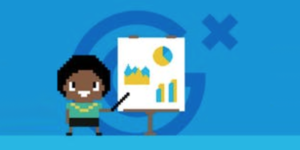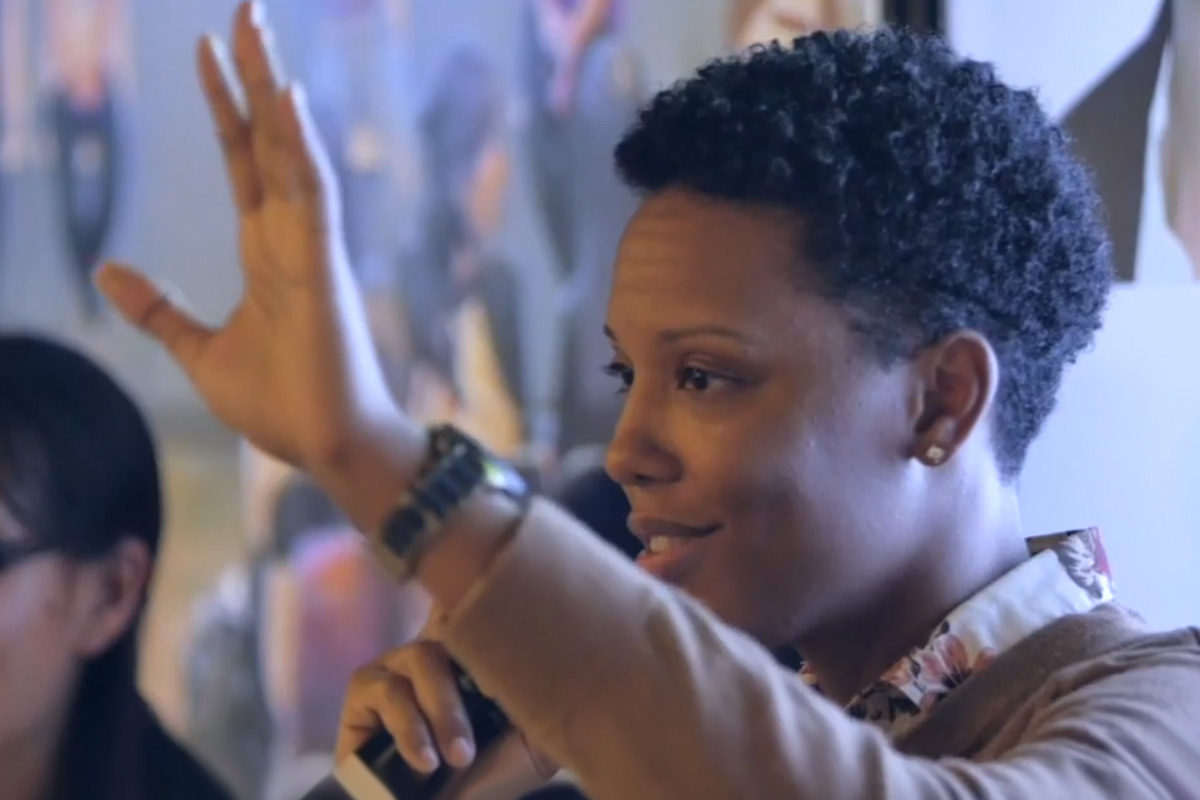Like what you see here? Our mission-aligned Girl Geek X partners are hiring!

Technical Recruiter Amrit Bhatti welcomes sold-out crowd to Postmates Girl Geek Dinner in San Francisco, California.
Speakers:
Amrit Bhatti / Technical Recruiter / Postmates
Allie Morse / Director of Launch & Expansion / Postmates
Heather Pujals / Growth Product Manager / Postmates
Samantha Phillips / Product Manager / Postmates
Christine Song / Software Engineer / Postmates
Bianca Curutan /Mobile Engineer / Postmates
Transcript of Postmates Girl Geek Dinner – Lightning Talks:
Amrit Bhatti: Thank you, ladies, and thanks, Angie, for helping organize all this. We are really excited to have you all here. This is me. I’m Amrit Bhatti, I’m a technical recruiter here at Postmates. I’m super excited to have you all here. This is just amazing seeing you all. A huge roomful of ladies. All these faces that I don’t know, this is something that we always want to see here, which is amazing to be able to actually make it happen.
Amrit Bhatti: Being in recruiting here, a big thing that we care about at Postmates is diversity and talent, specifically when it does come to women. Being able to partner with Girl Geek and do this for the first time is amazing. We are really excited and thank you guys all. I know that this is a huge thing for not just the recruiting team but for Postmates in general. Bastian, our CEO, this is one of his biggest priorities as well. Thank you. Hope you guys have a good night.
Amrit Bhatti: A little agenda about what to expect. We will do some talks with these lovely ladies over here, some lightning talks. After that, we will do Q&A, so please hold your questions to the end. Following that, we will do dessert. We have dessert and some wine at the end and we will also be giving out swag bags, so make sure you grab something at the end. But prior to actually diving into all the talks, if you haven’t heard of Postmates, wanted to give you guys a brief little introduction before we start the talks.
Amrit Bhatti: Postmates, if you haven’t heard of us, we are the leaders in on demand. Our mission is to get you anything, anytime, anywhere. A little history about us, we were founded back in 2011. We launched in San Francisco in 2012 and we started expanding after that.
Amrit Bhatti: We’ve been growing really rapidly since then. We’re in about 550 cities in the US. We’re in Mexico as well, which is awesome because one of our lovely ladies over there helped us make that happen. We’re at the point of fulfilling about 3 million deliveries, actually more than that a month and 4, all right, we had 4, 4 million deliveries a month. Always growing. Now, we’re at the point of actually giving people access to over 200,000 merchants on the platform. The growth has been insane in the past few years.
Amrit Bhatti: We’re continuing to grow and we couldn’t have done that without all of the talent that we have here, including the people that we’re about to hear from. First of, will be Allie Morse.
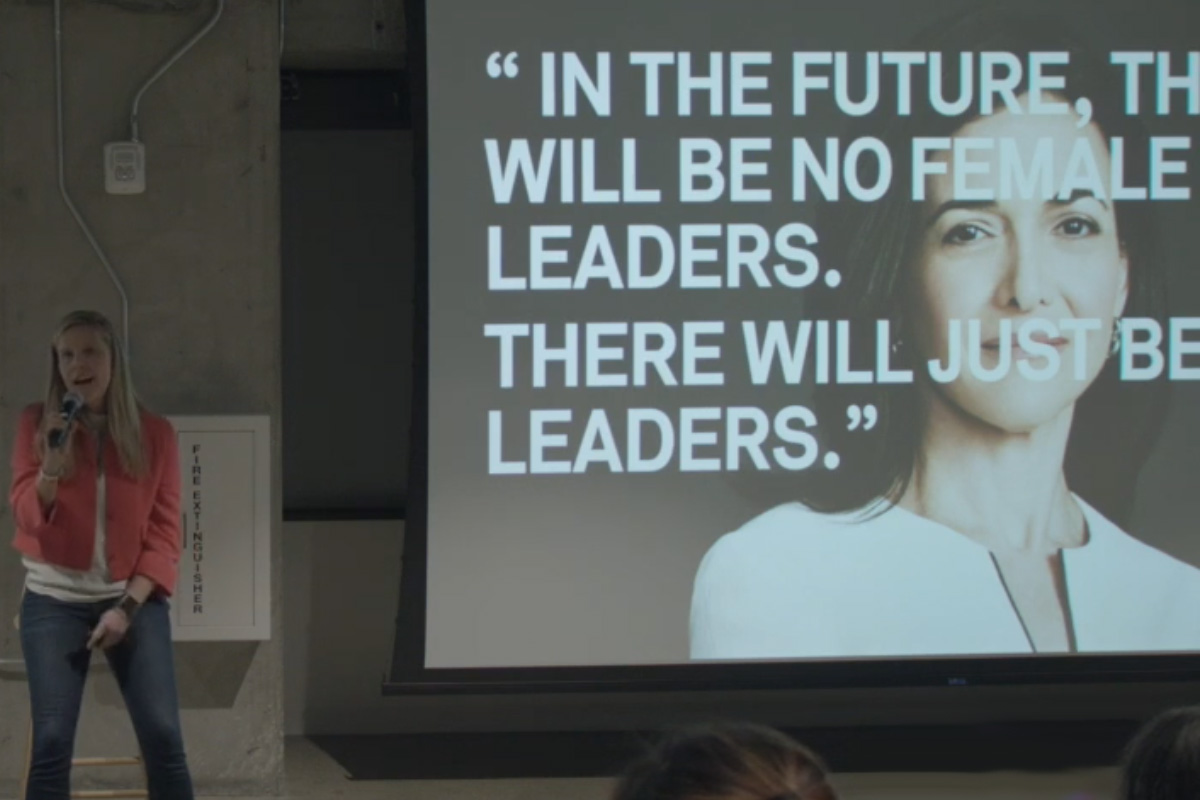
Director of Launch and Expansion Allie Morse speaking at Postmates Girl Geek Dinner.
Allie Morse: Thank you. Awesome. Well, thank you guys so much, all of you, for being here. As I said, this is awesome. It’s so incredible to see so many faces, especially women here at Postmates tonight. My name is Allie and I lead Launch and Expansion here at Postmates. That basically means that all of the new cities, the new geographic expansions that we do both domestically and internationally fall under the purview of myself and the stellar teams that I get to work with every day. I personally feel super honored.
Allie Morse: We have many, many incredible leaders, female leaders especially, here at Postmates and we want more. Yeah, I’m very excited to talk to you guys about this today. It was funny. I was like, “Okay, getting inspired for this talk about leadership. You know, maybe I should start with my slides.” I was like, “All right, what am I going to put on my slides about leadership?”
Allie Morse: I decided, I don’t know how many of you guys are familiar with some of those free stock images sites, so I went to pexels.com and I typed in leadership and this was one of the first photos that showed up. I was like, “Cool, cool, all right. He’s a dude. Could be your dad, maybe your grandpa. Very authoritative, cool, corporate dude.” This was another one of the photos. I’m really into this guy’s mustache. The whole, the red tie, I’m like, “Okay, he’s got it going on.” To be fair, there were a few other photos but this next one was my absolute favorite. Legitimately, there’s someone, either the photographer, whoever was categorizing these photos that thought that a photo of a dude’s crotch would be a really good representation of leadership.
Allie Morse: Anyways, kind of to start us off on this note, I love this quote from Sheryl. She gets a lot of exposure and not everyone loves everything she says but this is one of my favorite quotes. “In the future, there will be no female leaders. There will just be leaders.” I don’t know about you guys and the women in this room but at least for myself, when I wake up and I go to work every day, I’m not like, “Ooh, I am a female executive going to work.” I don’t really think of myself as like, “Ooh, a woman in the workplace.”
Allie Morse: Sometimes I think about that when I’m 1 of 10 people in a room and I’m the only woman or like 2 women in a meeting of 10, 15, 20 people. But I don’t know about you guys, on a day to day basis, I just try to be me and that’s what serves me the best, actually. I have a broad crazy career. I won’t go too much into it but I studied actually international development and public policy, a Master’s in Human Rights, always thought I’d work for the UN and then fell into working in tech.
Allie Morse: About six, seven years ago, building an online real estate classifieds out of Africa with Rocket Internet and then, moved to the Bay Area about three and a half years ago. It’s funny…
Allie Morse: I get sometimes questions, either at events like this, “Allie, how did you climb the corporate ladder to success in tech?” For me, I mean, I think that question’s quite funny. I definitely did not climb any corporate ladders. I kicked it and burned them down. For me, it’s all about being authentic. Right? I don’t always wear pink. Only on Wednesdays but I love that you guys got that joke. But sometimes, I mean, I was at a conference a few weeks ago and it’s like a sea of dudes and they’re blue and black suits. I’m like, “I’m going to wear orange because that’s just obviously, I’m going to stick out anyways. I’m one of the only chicks in this room, so I’m just going to wear a bright color.”
Allie Morse: Again, this is very stupid token, you can wear whatever the hell you want to work is one of the nice things about working in the valley but I think the whole point is just being you. People might not like you all the time but they’ll definitely respect you and if you get shit done, they’ll want to work with you.
Allie Morse: I’d say that would be one of the major takeaways for me in my career. The second being mentors and that means formal mentors. I’ve been really fortunate to work for some incredible people, some incredible managers and bosses that really took a deep investment in my personal and professional development, as a person and as a professional.
Allie Morse: Again, you’re lucky, I think, if you can, at some point in your career … Someone gave me this advice when I was 23 and I had a Master’s in something I didn’t want to do and they said, “You know, be sure to work with somebody at some point in your career that really wants to make you better.” They said, “Especially in the next 10 years,” which again, I think is sort of a moot point but the idea of something as basic as how you write emails, how you lead meetings, how you structure your thoughts and communicate. I think those things are incredibly important and I think a lot of us, when we’re working at startups, we’re building the plane as we’re flying it, so it can be really difficult sometimes to build feedback into your cultures but it’s incredibly important. It’s not just about feelings, right? It’s a huge opportunity to get that feedback from above, beside, below.
Allie Morse: I think that, again, the role of formal mentors and then, also thinking about a mentor community in more informal ways, right? Peers, colleagues, friends, people that can sort of fill some of that place for you when it comes to solving a really difficult part, problem, obviously, different career changes, I think that’s incredibly valuable and something that’s really been super important for me. Lastly, I think it’s interesting and I got asked this question a little while ago and I thought it was such a cool question. This young woman asked me, “How do I ask for more responsibility at work? How do I get a promotion? How do I sort of step up to the next level?” I think, obviously, the going and talking to your manager and saying, “Hey, I’d love some feedback about how I’m doing, how I can grow and improve and this is what I would ultimately would love to do in my career. These are the kinds of problems I think I can solve at this company.” Asking for that kind of feedback and I think simultaneously, stepping into the job that you want, right?
Allie Morse: Seeing a problem that you know how to solve, I think there’s Postmates example, there’s examples of this all across the board. People that stepped into problems that they know how to solve and then, it’s like all right, you prove it, you can do it and they let you do it. That was certainly very much the case with … I have a counterpart here that we launched Mexico together last year and none of us had really any idea what we were doing, but we figured it out and it was fun.
Allie Morse: Then, of course, very importantly, once you’ve stepped into that and you’ve proven your value, obviously, making sure that you’re getting the recognition and then the compensation that comes along with the new role, the expanded responsibility, and the value that you’re bringing. That’s incredibly, incredibly important. It’s called asking for it and stepping into it and then making sure that you’re getting the recognition that you deserve. Without going over time and they’re going to have to plane me off, I’m very excited to be here, excited to hear your guys’ questions and I’m super excited for our next speaker, Heather on growth, to take it away.
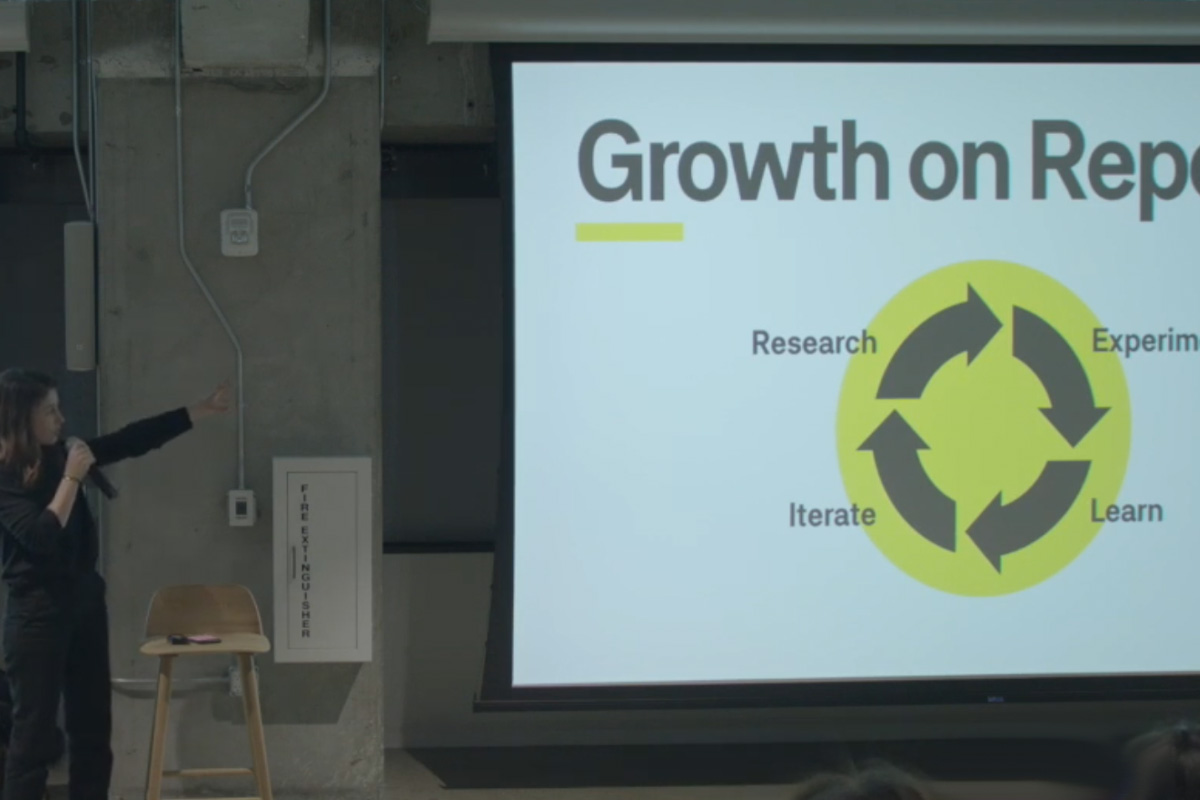
Growth Product Manager Heather Pujals speaking at Postmates Girl Geek Dinner.
Heather Pujals: Thank you, Allie. Yes, we need that. Hi, everybody. Like Allie said, my name is Heather. I’m a Growth Product Manager here at Postmates. Being a Growth PM is a little bit different than being a PM on a core product team, so I want to talk to you guys today about what I’ve learned from working on a growth team, what that discipline looks like at a high level and then, how I’ve been able to turn that into a mindset, not that it’s my invention, but how I’ve applied it to my personal life and hopefully, that’s helpful to you.
Heather Pujals: Let’s get oriented. Growth, like I said, is a discipline. It’s massive. When you’re trying to grow a business, you have a lot of tools in your toolkit that will help you do so. You have things like app store optimization, brand partnerships, email marketing, social media, just to name a few, and all of these things to add on a layer of complexity, can be used as switches. They’re off, then you turn them on. Very simple. That’s usually when you don’t have a lot of resources or your company’s at an earlier stage. But you can also use all these tools as dials that can be very finely tuned and can take a lot of time and can be very intricate to work with.
Heather Pujals: How do you actually become an expert in all of these things? Whether they’re switches, whether they’re dials, these millions of tools in your growth toolkit, the answer is, you can’t, predictably. The point is to not get overwhelmed. Right? Oops. There we go.
Heather Pujals: You can pare down this whole discipline of growth into this one neat little cycle of four stages. Research, experiment, learn, and iterate. It’s a little bit different from the core product cycle of build, measure, learn, which a lot of you have have probably heard.
Heather Pujals: The research phase here, when you’re … Excuse me. When you’re trying to grow a business is about looking at context, like where do you stand now? From a quantitative standpoint and a qualitative standpoint. This includes looking at your conversion funnel. Where are your customers dropping off, where are they converting and comparing that with how your users are actually interacting with the app on a human level, so you can do things like user interviews and usability testing.
Heather Pujals: In an ideal world, your quantitative and qualitative data will align and be able to present an area of opportunity for you. One example of this is let’s say, we’ll use Postmates as an example and your customers are going through this whole session, they’re opening the app, they’re looking at a merchant, they’re adding things to their cart and they get to checkout. People are disproportionately just abandoning session. Why is that happening?
Heather Pujals: This leads you to the experiment phase. Now that you’ve identified an area that you want to improve, you can set up different tests to explore what tweak can I make here or there, that will actually move this metric that I care about. Let’s say I want to add a, that take a picture of your credit card feature. That should simplify things. Let’s say we’re just trying to knock out some work that people do and my hypothesis is that if I make it easier and faster to check out, more people will do so.
Heather Pujals: I set up a test, run it for a while, some people are in a control, some people are in a test. In the learning phase, I’m going to go in and compare my results of that experiment with my hypothesis. Did things go as I expected, were they totally unexpected and from left field or were my results inconclusive? In the latter case, maybe I need to run the experiment again, instead of continuing. But let’s say we learned something and this improved. This test that I ran, my changing that credit card feature, improved conversion by .5%. That kind of sounds like nothing but in the growth world, that can be huge. What we’re going to do now is we have the power to go and change our product if we want to.
Heather Pujals: Sometimes in growth, sometimes we’re more of a consulting team to a core product team and we aren’t actually changing the product that much ourselves. Sometimes the things we experiment on are what paid advertising channels are the most cost efficient. What are the best times to send emails? All of this stuff we’re putting through this growth cycle and learning about how to optimize all of these metrics exactly the way we want to.
Heather Pujals: What does this mean for us as human beings outside the workplace? It means that you now have a framework for going through life and solving your own problems. It means that if you’re looking at the research phase on a personal level, you are someone who likes to ask questions, you’re concerned with what’s going on around you and why, you like to know what’s going on. Like with the election yesterday, you know, we didn’t have our heads buried in the sand. Right? We’re following along.
Heather Pujals: Then, in the experiment phase, this means that you are open to trying new things and taking risks. That’s cliché at this point. but it rings true for a reason. Right now, I’m up here running an experiment and talking to you guys. My learning phase will look like going through the reel that we have here and finding out if I spoke decently. There you go, fourth wall.
Heather Pujals: After the learning phase, then you go to iterate. Once I’ve figured out what I can do better, I’m going to practice and try it again. You know? I’m not assuming this is perfect, but you have to go through these motions in order to grow and learn and you can ultimately do this in perpetuity. I hope this was helpful for you guys. I don’t want to go over time. If I had more time, I would talk more, but I’ll be here for Q&A and I’m happy to exchange LinkedIns or Twitters with anybody after this. For now, I’d love to introduce my colleague Sam Phillips.

Product Manager Samantha Phillips speaking at Postmates Girl Geek Dinner.
Samantha Phillips: Hi. Okay. Good evening my fellow geeks. My name is Sam and I’m a Product Manager here at Postmates. My topic tonight is going to be about volunteering and leveraging whatever cool unique tech that your company is building for maybe something that it wasn’t originally intended for.
Samantha Phillips: About six months ago, I started at Postmates and one of my first company meetings was actually a presentation given by Disney Petit, who is our head of civic labs and she gave … Yeah, ooh. She gave this awesome overview of all of the volunteer projects that Postmates had been a part of and facilitates over the first half of the year.
Samantha Phillips: The second part of that was that she was introducing these new concepts that she wanted to carry out over the second part of the year. I just sat in that crowd and I was so excited just listening to her talk about this and as my previous roommate pointed out to me tonight, I did not have a history of volunteering at that time. But just hearing her speak about it was really inspiring and one of the ideas that she had was something that I was interested in. Afterwards, I immediately ran up to her and I said, “I have three weeks of Postmates experience and I would like to be on your volunteer team.”
Samantha Phillips: Thankfully, there were a bunch of other people that were interested. We got together and started thinking about how we could use the Postmates business model for this new idea. That idea is called FoodFight. What did we want to do? We set off to combat what’s been referred to as the world’s dumbest problem which, is food waste. If, as an exercise, if you guys just want to think about how many restaurants in the SoMa area and then, also, how many people you might have walked by just today on the street that are clearly in need of food, it is the dumbest problem.
Samantha Phillips: There’s probably restaurants that are throwing out food and they have people sleeping in front of their doorstep. I don’t know why but we haven’t been able to figure this out as a society and so, it’s something that we wanted to start tackling. I don’t know if you guys are familiar with Postmates, but we are really good at getting one thing from point A to point B and for me, personally, that’s my favorite Indian food restaurant in the Mission to my apartment. Shout out to Pakwan. They’re now our partner in Postmates.
Samantha Phillips: This business model was perfect for what we wanted to solve for actually getting that surplus food to the people in need. What we actually did was we set out to leverage all the existing tools available to us. We use our delivery API product and we use our restaurant partners and we also use our awesome Postmates which without any of this dream would be a reality and what we did was we actually built a feature in the merchant app in this tablet that all of our restaurants have in store today and through just the click of a button they can actually request that a courier come to their store and pick up that surplus food. Really, the goal here was from even in my personal stint working in restaurants, you’re so physically and emotionally tired after that shift. Nothing extra is getting done. You cannot wait to go home. A lot of this food ends up just being thrown out for that reason. What I knew we needed to set out and think about was how do we make donating this surplus food as easy as it is to throw out.
Samantha Phillips: We worked on this design. There’s a group of us. there’s a blog page you guys can totally read about it. But there’s a group of us that came up with this design and this concept and what we wanted to do is just at the click of a button, you can just have someone come and take that surplus food for you. What we do in the background is we dispatch our Postmate. They go to that restaurant. We know where you are based on that tablet. We actually pass through the address of a shelter in that neighborhood that we know is taking donations.
Samantha Phillips: I’m super happy to say that after many long months, we are at a point where we’ve launched FoodFight to 250 participating Postmates partners in the LA market. Yeah. The real MVP. We have completed 45 donations to Midnight Mission in downtown LA. We’re obviously hoping to expand this as well.
Samantha Phillips: To recap, the four things that really stuck out to me about why we can make this a successful thing, one is company values. I have to plug Postmates here. I had never even heard of Pledge 1% before working here, but it’s something that we’re a part of.
Samantha Phillips: You can go to Pledge 1% and find out more, but it basically facilitates businesses that can sign up to donate 1% of their equity, product, time, or people, and Postmates is heavily involved in that, which is why we even get to have a civic labs department here. If your company hasn’t heard of that, maybe pass on the world. Sorry, that’s too soon. Thinking I had more slides. The second one is just about finding time, which you don’t work short days at Postmates but we actually do get 24 hours of volunteer time and you can always do things outside of working hours, which is what a lot of us decided to do for this project. Number three is deadlines. We actually worked back from when we knew we wanted to launch this program.
Samantha Phillips: People have really busy schedules. We all have volunteer time but it was just mostly about making enough buffer, so that everyone can get their piece done by the time that we wanted to launch and communicating that Then, step four was proof of concept. This platform is definitely usable. It is not yet scalable but we’re been able to prove its worth and I’m happy to say that we’ve gotten some numbers and good feedback and we know the iterations we want to make and we’re going to be prioritizing that in our roadmap for next year.
Samantha Phillips: Yeah, this is my shout out to encourage everyone to think about the tech that you use on a daily basis and how else could that be used in and around our community to do something better. I will leave you with my favorite motto which is, “Ask forgiveness, not permission.” Obviously, up next is Christine.

Software Engineer Christine Song speaking at Postmates Girl Geek Dinner.
Christine Song: Thank you, Sam, for that introduction. My name is Christine Song. I am a backend engineer here at Postmates, and today, I’ll be talking about learning how to learn.
Christine Song: When you look up learning how to learn on the internet, you get a lot of really cool techniques to hack your brain. You get things like, “Growth mindset versus fixed mindset.” Thank you, Heather. You also get things like, “The difference between diffuse attention and focus attention. The difference between long-term memory, short-term memory. How to keep things like mnemonics. How to keep things in your brain.”
Christine Song: But I think that the precursor to all of these learning how to learn techniques is the idea that you have to change your relationship with your brain.
Christine Song: I started learning how to code about a year and a half ago. When I had first started learning how to code, I came from a purely non-technical background. I was working in a restaurant industry about five years before this. That entire time, nothing that I did had immediately transferable technical skills over to coding, so when I decided, “Oh, I want to learn how to code,” this is kind of what my brain, up here on this slide, told me.
Christine Song: My brain had a … this little human up here is the electrical impulse that represents the electrical impulse that travels to my brain as I think and the moment it thought of engineering, it thought immediately of math. Historically, my experience in math is not the best. The moment I associate anything to math, my brain kind of went into a haze and it started thinking, “Oh, incompetent because you never in your past have ever been good at math, so why do you think you can do this now?” Which immediately leads to, “I can’t do this.” I’m going to have to find out where it is that I’m pointing to. Cool.
Christine Song: When I realize that I can’t do something, I like to default to three different modes to alleviate my stress, which is either, one, “Screw this, I’m going to the woods and live off the land.” It’s a very real feel guys. I’m not kidding right now. Or, “I’m going to meet up with friends,” or, “I’m going to go on a Netflix binge.” For the sake of this example, let’s assume that I decide to screw this. I’m going to move to the woods and live off the land, which inevitably leads me to, “YouTube rabbit hole on survival strategies,” which ultimately ends in me crying myself to sleep. If you’re curious about what happens with the other two options, they’re not that much better. I complain about my life. “I wish my life was like a movie,” and ultimately, I end up crying myself to sleep.
Christine Song: When I first decided that I’m going to learn how to code, I kind of put a pin in it and I decided, “You know what, I can’t do it.” Obviously, because this is kind of what I ended up doing but then, I had another hard day at the restaurant I was working at. I was out there, I was sitting in the parking lot. I wasn’t even in my car. I was on the sidewalk. The sidewalk was covered in trash and people’s spit from smoking cigarettes. I was sitting there very dejected and I was thinking very nostalgically, “Hey, remember that time a few weeks ago when you thought that you could be an engineer, you’re going to learn how to code?” I thought about it and I realized, like, “Oh yeah, you know, that was such a failure. You really suck.” Then, if I thought back to my actions then, I realized that I didn’t even try learning how to code.
Christine Song: What I did was I bought a multifunctional hatchet off the Amazon and then, I hung out with my friends for three weeks. I did nothing. I took no actionable steps to actually learning how to become an engineer. This, in of itself was a really big wake up moment for myself.
Christine Song: I realized that I let my brain tell me what it is that I can and cannot do. I didn’t realize that my brain was a tool in which I could use to learn things but up until this point, I have always thought what my brain told me, it had the culmination of all of my experience that I’ve ever experienced in life and up until this point, everything that I have learned up to this point was I use my brain to learn all these things and so if my brain was going to tell me I can’t do something, it’s probably right. Right?”
Christine Song: Wrong. Your brain is a tool. It’s not something that can tell you what it is that you can and cannot do. What you do with your brain is you learn how to learn, which is why there are so many cool techniques about hacking your brain, thinking about the ways that you can hack your long-term and short-term memory using mnemonics to remember things. Like Heather said earlier in her presentation, it was about learn … Wait, no. Learn, research, experiment and iterate. That is how you grow connections in your brain.
Christine Song: I try to begin. I was like, “All right. Look, what I’m doing right now isn’t really working, so I’m going to try and equate engineering with something that I’m very familiar with.” Up until this point in my life, in college I majored in philosophy and my emphasis was in logic. I was thinking, engineering has a lot of problems with words. Problems with words, essay questions, computers. It doesn’t really compute all the way through because I wasn’t actually tackling my fear of being afraid of math and thinking that anything to do with math, which is what society had told me up until this point is that if it has to do with math and you are a woman, you cannot do it.
Christine Song: It is the worst thought process think of and eventually when I realized that, I ended up discarding the general thought process that I had, the habits that I was so used to thinking and I confronted my fear of math. Math, I realized how I’ll do questions, input and output and the thing with majoring in philosophy was that my emphasis was logic. Logic, if you guys haven’t taken a logic course before, it looks just like math. You do proofs with Greek symbols and variables and you do proofs much in the way that math teachers do proof. But in my head, I was able to do logic because I equated logic with philosophy and not logic with math and therefore, I never had that fear of learning how to do logic.
Christine Song: Once I realized that my fear of math was completely irrational because like I said, your brain is a tool. What you practice thinking is what becomes true. I ended up learning more about computer programming and I ended up being able to eventually make the various slow and tenuous connections into logic and computer programming but eventually, I ended up as a paid engineer in the field in San Francisco. Thank you. Now, I’m a backend engineer here in Postmates.
Christine Song: My point is this. You can look up how to learn and you can look up what it means to hack your brain and figure out the best way to do things but before you do that, you have to change your relationship with your brain. If you don’t recognize the habits that your brain takes and you think that … like you let your brain tell you, “Oh, anything to do with math, you cannot do,” it is a habituated thought. Your brain is very much like a muscle. If you keep thinking these things, you’re going to be very good at talking yourself out of doing anything that has anything related to math.
Christine Song: However, if you realize, if you can take a step back outside of your brain and maybe draw a mind map much the way that I did while writing this talk. You realize that the things that you think that you are doing, the things that you think that you are capable of doing, if you keep thinking those things and you get power to dictate your actions, it will become true. But if you are able to take a step back and realize that isn’t the definition of who you are and you can do whatever you want because you do with your brain what you wish to do, then, you can, like me, go from a completely non-technical career into being an engineer in the field. Thank you. Up next is Bianca.

Mobile Engineer Bianca Curutan speaking at Postmates GIrl Geek Dinner.
Bianca Curutan: Hi everyone. Oh, that was loud. My name is Bianca. I’m a Mobile Engineer here at Postmates. I’ve been here for about one and a half years and in that time, I’ve worked on the Fleet iOS and Android apps as well as recently, the buyer iOS app. Prior to Postmates, I used to work at Fandango and Warner Brothers, where I worked on Flixster iOS and Rotten Tomatoes web.
Bianca Curutan: The point I’m trying to make by listing all these historical data is I work with product. I’m not a product manager, in case my product manager is somewhere around here, but I do work with product. A few weeks ago, I was on a panel from the Modern Product Engineer because like I said, I know product. It’s something I’ve worked on for years, it’s something I like to think I’m good at and it’s something that I can talk about.
Bianca Curutan: When I was asked to speak at this event today, I was like, “Of course I’m going to talk about product engineering, especially product engineering at Postmates.” But I guess I’m kind of jumping ahead, though. The first thing I should clarify is what is a product engineer. When most of us think of software engineers, we might think of full stack, which by definition, is the capability to execute something across the stack. Product engineer, on the other hand, is also about capability, but focused more on the end goal, the product.
Bianca Curutan: Moving on from there, at a lot of companies, especially bigger ones or some with more corporate culture, the process tends to look like this. The first step, of course, is requirements. The product manager will go to the different teams, collect their requirements, write a doc and then, deliver it out to the team.
Bianca Curutan: The next step is design. You may think of design in terms of software such as systems design or you might think of what the end user sees, like UI design. Either way, there’s not really any coding done in this phase.
Bianca Curutan: Next step is, of course, coding. Coding happens in the development and implementation phase and then, there’s testing. Testing can be internal or external. Maybe both, maybe some combination. You never know. Then, once the product is deemed complete or at least deliverable, then it is delivered out to the end users and after that, it comes back to the engineers for any bug fixes but hopefully not. Maybe just more feature additions or improvements.
Bianca Curutan: This is all well and good, but you might not be able to tell from this circular shape, but it’s more of a waterfall method, meaning it’s sequential. It doesn’t give you a lot of opportunities to jump back to previous steps or jump ahead to the next step without completing the current one and it also doesn’t provide a lot of opportunities for feedback.
Bianca Curutan: At Postmates, we like to think differently. Something that Allie mentioned is getting feedback as you grow your career, but we also like to apply it to this process. As you can see here, on a high level, it looks the same, but there’s also that inner loop for the feedback loop. Ideally, with this feedback loop, you’d only want to jump back one step or so, trying to get feedback as early as you can in the process. However, something nice about startup life or Postmates life is you have the flexibility to jump around. You might go requirements, design development, oh wait, there’s something that needs to change, and jump back to the requirements phase. That’s totally fine. I think.
Bianca Curutan: Some examples of how to provide feedback at Postmates might be through discussions, it might be through commenting on poll requests or request for change or like I mentioned before, requirements if you want to try to grab those changes early. It could also include just improving features and reporting bugs.
Bianca Curutan: The nice thing about this feedback loop is between product and engineering specifically, there is ideally agreement between the feedback that you want to provide but sometimes, there’s disagreement and that’s totally okay. That disagreement provides healthy tension between the product and engineers, which in the long run can make the team more effective and more productive. At Postmates, the product teams are fairly small, so how we deal with that healthy tension can actually make a really big impact on the team and on the company.
Bianca Curutan: The last change I made here was measuring outcomes. Delivering a product is all well and good. We believe in it. We think it’s cool, but what do the users think. It’s really important to measure the outcome to be able to plan for the future and iterate on it. Again, speaking to the previous speakers. Oop, that was it. Okay. Sorry. Back for a moment.
Bianca Curutan: I ask you again, what is a product engineer? Earlier, I just defined it as the capability to deliver an end product. However, now, I’d like to clarify that not only is it the ability to deliver an end product, it’s also the contributions to be involved in the conversation that helps shape that product.
Bianca Curutan: Okay, so before I go, one last thing I’d like to mention is open source. Contributing to open source can be done in two ways. You can either start a project yourself and open it up to the community or you can contribute to an existing project. There are so many benefits to contributing to open source, but among them, of course, is gaining experience. You can deepen your understanding of the technology, you can gain morale and you can improve your reputation in the tech community or build a reputation in the tech community.
Bianca Curutan: Luckily, at Postmates we have or have had software engineers and other contributors who do do that. Some of them have since started their own projects, to which I have a link to here. I do encourage you all to check it out, maybe contribute on your own. No pressure, either way. Yeah, that’s it. Thank you for giving …
Amrit Bhatti: Yeah, go ahead and take your seats, ladies. Anybody have a question because I can start walking over now? It doesn’t matter who it’s to. We can figure it out. All right. I’m going to need that hand again because I don’t see you. There you go. Thank you. Sorry, sorry, sorry.
Audience Member: Really good slides and very engaging. All of you did a really good job. I was wondering if normally, the slide decks are shared from the Girl Geek Dinners? Yeah.
Amrit Bhatti: That is a good question. I’m not 100% sure. Angie or anyone from Girl Geek, do we typically share these slides after the fact? Okay. I think we probably just need to sync up with Postmates to see if we’re open to sharing everything that we have on them and then, I can always blast it out to everyone that RSVP’d if we’re okay with it. All right.
Audience Member: Thank you. Thank you guys all for chatting. That was lovely. Allie, one of the things you mentioned was that it’s really important to be your authentic self. Have you ever run into a time where being your authentic self has worked against you and if so, have you had to adjust?
Allie Morse: Well, I know it’s shocking to think that somebody might not like me. There’s totally a few people. Yeah, that’s a great question. Damn it, Belle, I thought you’d give me an easy one. No. It’s really funny. I definitely have had the experience where … Yeah, actually, most certainly, where there was something that I thought I really wanted in my career, for example, a certain position or a certain amount of responsibility or something specifically around, “Oh, this is going to be so amazing. Once I get here in my career,” right? Where you feel like you can’t be authentic in order to get there. It’s funny. Once you get there, you’re like, “Well, this is what I thought I wanted and this is actually not what I want at all. I don’t like this at all.”
Allie Morse: To be honest, I think even when sometimes it’s more difficult, actually, having to maybe be something that’s not the right fit, either a role or a company or a team and say, “You know what, this actually isn’t going to work for me.” It can be really painful and really difficult, but I think it’s so worth it because if you’re yourself, even if it takes you longer to get to the “place” you want to go, it feels so much better once you’re there because you’re yourself. Right? That’s the greatest gift, I think, I could ask for is getting to wake up every day and show up and be myself instead of pretending like I’m someone I’m not.
Audience Member: Hi, I liked your answer by the way. This is for Heather. You talked about all of the traditional levers in growth hacking that you can pull but I’m wondering where you get inspiration for new ideas and pushing the envelope in your products.
Heather Pujals: Thank you for the question, first of all. Like I touched on a little bit in my talk, what I really like about gathering insights is that perfect marriage of quantitative and qualitative data. I think, one faux pas that a lot of teams accidentally take part in is leaning a lot more on your quantitative data. It’s really easy. It’s very accessible nowadays. Anyone can look at it and start making assumptions but I think it’s really important to actually listen to your users. Again, that’s cliché. Everyone says, “The user is our number one thing.” But actually going out and doing user testing and observing people interacting with your product, whether you’re recording sessions just watching them use it, I think that is how you get a lot more insight and you can actually tackle things that are really, really relevant and ultimately move numbers as well as provide a better experience. Thank you.
Audience Member: Hi, thank you guys for all speaking. It was a really interesting and diverse set of experiences. This question’s actually for Christina. First of all, I’m a USC alum also, so fight on. I also just recently graduated from a coding bootcamp. Given that this is your first, it sounds like it’s your first job as a software engineer, how are you dealing with the feelings of impostor syndrome in your first role?
Christine Song: Yeah. Absolutely. I think that impostor syndrome is something that specifically plagues bootcamp quite a lot and I think that a lot of what it is, is knowing what it is that you have to focus on. If you’re at a software engineering company, you’re assigned tickets. Forgetting all of the outside pressure that is applied on you, just focus on what’s in front of you. Your only focus and your only job is to do the things that you were assigned to do to the best of your ability, so that when people do ask you a question about your work, you can answer those questions and you research everything so thoroughly that you’re confident in what you’re saying. I think that when you take a step back and you think of the bigger picture and you’re like, “Oh, crap. I’m a woman, I’m in a tech company. Oh crap, how did I get here?” Because my background wasn’t technical in any way whatsoever.
Christine Song: The only way I am able to get through that fear, “I don’t belong here or I’m not good enough for this,” is just looking at what it is that you’re doing and just focusing entirely on it. Don’t let the outside influences distract you from what it is that your job is. Don’t let anyone tell you what you can and cannot do. Just focus on what you’re doing and you’ll be fine.
Audience Member: Hi. Thanks everybody who spoke. I want to find about FoodFight. If there’s a way that we can help amplify that when it’s time to spread the message, I’m connected to several cities and several countries, and would love to make that available and accessible.
Samantha Phillips: That’s awesome and it also puts a little bit added pressure on us too. Like I mentioned, that scalability comment earlier. No, but I would love to talk more. I’ve actually had a couple of people come up and speak today to me about something similar and I know that this concept is floating around a lot and there’s a couple different players in that space. I think that there are a few different mediums that people are doing. Sometimes, people are just doing the deliveries and sometimes people are offering moving those products from place to place but yeah, would love to hear more because I think that obviously, we all want to grow this concept and the concept of hunger is everywhere. Yeah, please come find me.
Audience Member: Hi. Thank you to everybody who spoke. I found all your stories really interesting. This question’s specific for Christine. I loved your mind map. It was a really great personal way to understand your journey. I’m curious, what was the original spark that made you think that you were interested in doing engineering and doing coding in the first place? Where did that spark come from to get you into the spiral of, “Oh my God, I can’t do it?”
Christine Song: Right. I majored in philosophy like I said and as my emphasis was in logic, we took a lot of advanced logic courses in my senior year of college. I was the only philosophy major in my class, which was surprising in and of itself because I didn’t know any other majors that studied logic. It turns out, everyone else in my class were Comp Sci majors.
Christine Song: Through some conversations asking my classmates why are you guys taking this class, what is the reason you’re here? They told me things like, “Everything in computer’s programming relies on the very basic fundamentals of logic.” Everything you do is with logic gates. I was just super excited to find something I could do with my major because otherwise, I was going to end up in the restaurant industry for the rest of my life and that’s not what I wanted.
Christine Song: That’s what began my journey into the coding industry. That’s what sparked my interest and then, after doing some research on boot camps and getting those initial assessment tests to determine whether or not you’re good enough for software engineering. That’s kind of where I started getting my fear of, “Oh crap, this is way too much like math. There’s no way I can be able to do it.” From then, it was the entire journey that I had described earlier. But yeah, it was primarily from my major.
Audience Member: Hi. Thank you so much for awesome presentations. I have a question for Samantha. My question is about, as we all know, Postmates operate in a very competitive environment. Anyone who Googles a restaurant and try to order a delivery or saw a long list of similar services, you as a Product Manager, how you build your product vision in this highly competitive environment to make the product stand out, come out with new features. Maybe you can share your experience. Thank you.
Samantha Phillips: Yeah. No, that’s a great question. I do do other stuff outside of FoodFight for Postmates, so thank you. No, it’s something that I think we’ve all touched on a little bit, like Heather most recently. Understanding what that differentiator is because like you mentioned, there are some other delivery services out there and what sets you apart and what makes you different and I think that my personal story for Postmates, I think I was one of the first adopters. I thought the concept was incredible and was the first one that I had heard about. For me, it was always a dream to work at a company that I absolutely loved using the product on top of everything else. I think that you’re always looking at that.
Samantha Phillips: I previously was on the merchant team. I just switched over into other one, but most of my experience here is on merchant, which is a team that’s dedicated to focusing on those relationships with the restaurants. It’s something that is important to us and has a lot of other benefits for the product on the line. You hear a lot of feedback from those restaurants when they finally know that, “Oh, that guy that keeps coming in to ask for an order, he’s actually not eating all that food himself. He’s working with Postmates. You start to hear a lot of the feedback and you start to understand, there’s these restaurants down there working with four or five different delivery service partners. You go into their store and you see five different tablets set up. They are the best people to go and talk to, to get that information.
Samantha Phillips: Actually, another Product Manager, Sharon, who also works at Postmates has been going into those stores and talking to them about the what the difference is between those different tablets and getting that direct feedback. I still think that, that’s one of the best ways to understand what your product roadmap is.
Samantha Phillips: You also, I will say, what the caveat … This is a long-winded answer but the caveat there is you don’t want to just be building your product for exactly what people are telling you about because you’re going to end up only building your product for your existing customer base. You have to continue to think about what is the next step. What are people going to want? We solve this one problem and that’s awesome. We’re happy today but why will they be upset tomorrow and you kind of have to try to look around that corner and think about what’s going to come in the future and what people will want to have solved next.
Audience Member: Hello. Thank you again. This question is for Allie. I would like to know more about, you mentioned about mentorship, which is very important. I would like to please identify one situation or some example how you identify a mentor, how you would approach and how that person has helped you throughout your career.
Allie Morse: Yeah, absolutely. It’s funny. I think one of the most formative for me was a boss that I had previously when I worked, as I said, at Rocket Internet. What was so interesting about him, so he had come from a very strong culture of feedback. Again, it wasn’t my first job but you know I’ve been working at least four or five years, but he responded to some emails that I was writing and was like, “Allie, this is how exactly how you want to write an email.” I know this sounds so ridiculous but it was very, very helpful. He helped me with some really basic tools around structuring your time, around structuring your thoughts, being very, very clear in meetings and in presentations. It was funny, though. I never thought of him as sort of a mentor beyond a manager and he was a great manager and a great boss but I didn’t necessarily think like, “Okay, when I leave, this guy’s going to be on my side,” but I was really, really almost pleasantly surprised when I left that role and that company, yeah, just how generally supportive he is. The one thing I would say too is like sometimes, I won’t talk to him for over a year. We live on different continents.
Allie Morse: It’s great if you have a mentor, where oh, you go and you have coffee once every six months or something like that but I think kind of being realistic that, okay, that was a more formal relationship, right? He had been my manager. Now, if I genuinely have a question or I mean, obviously, references he’s really great at but beyond that, right? Just knowing that, that’s there and then trying to cultivate that relationship and just sort of letting them, I think, happen a bit more naturally as opposed to thinking like, “Okay, a mentor is somebody. I’ve got to find them this and then, we’re going to go for coffee once a month and they’re going to do all these things for me,” having those expectations. I think, letting it happen naturally has worked for me.
Audience Member: Thank you. Besides hyper local problems that you’re solving for on both sides of your marketplace, are there any other overall trends or any other key factors that Postmates tries to solve for in new products.
Bianca Curutan: Trends. What kind of trends we try to solve with new products? I feel like this is more of a product question but, I don’t know. The trends are always changing. It might be difficult to answer that one because we always try to stay modern, we always try to get feedback from the users to see what they want.
Samantha Phillips: This is going to be a three-part answer. I would say that one of the … That was a tough question, to be fair. One of the trends that I’ve seen is this concept of the last mile and Amazon talks about it a lot but these giant companies, they got really, really good at moving an item from the east coast to the west coast in the speed of light. They get to these giant warehouses and then the efficiency stops. It’s getting it from that point to the actual person’s doorstep that you are starting to see a lot of that trend come up and you’re starting to see the Amazon lockers at Whole Foods. These areas where you want to be able to just go pick up your item.
Samantha Phillips: I think that one of the differentiators of Postmates is that we have this incredible platform for the delivery API like I mentioned before where we can actually leverage the really efficient algorithms of our fleet to actually move any product from one place to another. We all know it very well, I’m sure, for getting our dinners delivered, but we do a ton of other delivery just from point A to point B and moving products that, it’s just that final mile to get it to the end consumer. I think that’s an area that we’ve been focusing on a lot too.
Heather Pujals: Sure. I’ll add to it. Might as well make it three parts. I think as far as oncoming horizons go, I think a new area that Postmates is looking into heavily is expanding our subscription service. The cool thing about working at Postmates is that we aim to be not just a product, but a lifestyle. We are here for you whenever you need us, whatever you happen to need, whatever time it is and wherever you are. I think other companies have done this very well like Amazon Prime. I’m sure a really good portion of you guys are Amazon Prime subscribers and you probably use it all the time if you’re like me. I don’t know.
Heather Pujals: Postmates is trying … One of our big goals for the next year is to grow our subscription service. You may have heard of it. It’s called Postmates Unlimited. Here’s a little plug here. For $9.99 a month, you can get unlimited deliveries and you won’t pay a delivery fee. For us, being able to get customers bought into this ongoing subscription model means that it’s more than just a one time thing. You’re not just interacting with Postmates once every few months when you remember that it’s possible. It’s, “I need something now. I can get it. I need a new T-shirt for … Well, I guess not a T-shirt. A blazer for an interview I’m going to because I am a blazer wearing person.” Or you need food, or you need an iPhone charger, whatever you need, it’s not just food. It’s not a one-time use thing and I think Postmates is really leaning into this and this is how we aim to expand and take on a lot more of the marketplace.
Audience Member: I guess this is for product and engineering but one of the demands of working in a startup is producing quickly from a product standpoint and at the earlier stages, you’re trying to do anything to satisfy your first existing customers. I guess, how do you produce quickly but also listen to existing customers but also produce proactively for all the new prospects?
Bianca Curutan: That’s a problem that we are tackling daily. On the team that I’m on, fulfillment, it actually solves all of those or works towards solving all of those. It’s a larger team, so we split up into pods exactly for that reason. One of the ones you mentioned was for onboarding new users. One pod is totally dedicated just to that. For onboarding and for whatever other features they build, that is the goal they’re working toward.
Bianca Curutan: Then, you said also listening to feedback. Depending on what the feedback is, that will go to the different pods that would be responsible for it or spread responsibility. Yeah, I don’t know. [inaudible]. That’s across all teams. That’s only one side. That’s the courier side of the business, but then, also the merchant and buyer side have similar structures that we try to listen to the feedback and we try to measure the priorities based off how important is that versus this other feature that we’re working.
Audience Member: Hi. I’m very inspired by using technology for good, especially for FoodFight. I was just wondering, how did the business case got brought up to scale because I’m assuming … Well, this is a big assumption. Might be wrong, but restaurants by the end of the day, they usually call Postmates to pick up their leftover food for the day and that’s sometimes clashes when people are getting dinner or getting things delivered back home when they’re off work. Just wondering how that whole business case came to be about and how the product was tweaked as business cases would come along with it.
Samantha Phillips: Yeah. No, that was a very real thing that we were thinking about. Just a little bit of context for what our tablet app looks like. Every restaurant gets to set what hours they’re open and then, when they’re set to be closed, we don’t just turn the tablet off. We obviously use that time to show various other things. One of the, we call them, close [inaudible] cards to whatever, too similar. But we use that for multiple different things, like we show you your stats for the day. We can post just an informational card up there and so, we wanted to take that route and just make a new type of card that actually, that’s what I showed up on that screen. That purple card that just has a button on it to request that Postmates. We had a link on there to learn more, so it could take you to the help center if you wanted more information.
Samantha Phillips: A couple of reasons we wanted to do that. One, exactly as you mentioned, you don’t know if you have surplus food at the end of the night and if you do have surplus food at the end of the night, you might want to reconsider how often you’re ordering food. But the second item is also we didn’t want to interrupt those orders that are coming in and we want the merchants to be focusing on those new orders and preparing them. We wanted to at the time make sure that it was after they were closed, after they had taken stock of everything that they had left over and after they were no longer accepting orders, then they could evaluate and make that decision then. It shows after their closed hours, so usually after business.
Amrit Bhatti: All right, so for sake of time, we’re going to be able to do two more questions and then, have to wrap it up because we do still have dessert and networking hour after the fact. One and two, and then, we’re going to have to wrap it up there unfortunately, but we’re all open to talking after, during networking hour, so you can just find us. We will be here. Sorry.
Audience Member: Hi. I think this one’s for Heather. I had a question on growth. When you’re looking in growing into a new market … Or could be for Allie. I think, you’re in growth as well. What are more of the merchants and what are things you’re looking for in a merchant that would signify that they’re a quality merchant?
Allie Morse: Sure. Yeah, it’s a great question. I think, so, obviously, merchants have very, very important part of our marketplace. We’ve got three-sided marketplace. The buyers, the merchants, and the fleet. For us, it would be we know what the general, how popular these merchants are before we even get there, right?
Allie Morse: What their web presence looks like, how popular they are, those kinds of things. We try to understand, all right how popular they are in terms of their sit down as well as their take out if we are able to ascertain that, as well as potentially the delivery and then, obviously, once we launch the new market, we know how high up they are in terms of the order volume. That helps us prioritize as well.
Audience Member: Hi. My question is for Bianca and Christine. I was wondering as a student and as someone who isn’t majoring specifically in computer science or engineering, when was it that you guys knew that you were ready to start applying for jobs? Yeah, that’s what I’m interested in.
Christine Song: I would hesitate to say that there was a very specific moment where I was like, “Oh my God, I am a software engineer. I know what I’m doing.” I think, honestly, building my first full stack application from back to front was when I started realizing like, “Oh, what computer programming is, is building a website where you pass data around and you serve up data to specific URLs.” It took, I guess, learning that I was able to do these things and understanding that people prior to me, who have also been in complete non-technical backgrounds were able to do these things was really what bolstered my confidence but it’s honestly a work in progress. The more you do, the more you learn and the more I learn, the more I know how little it is that I actually do know. But honestly, the entire process has been really exciting and I would say that if there is ever a moment where I’m like, “Oh my God, I’ve made it as a software engineer,” maybe it was getting my first job, but I don’t think that I’ve fully been there yet. I’m still learning a lot. Honestly, there isn’t a moment where you reach the goal but I think the entire process is learning. [inaudible].
Bianca Curutan: I agree. It’s kind of hard to say at what moment you feel like you’re a software engineer. If you’re asking more about interview prep tips, I’m happy to talk about that after this, but as for how I decided like, “Okay, I’m ready to start applying for jobs,” I wasn’t. I actually just kind of fell into my first software job right out of college and I wasn’t really looking for a coding job but it was an office job and they happened to need a programmer. Sometimes it just kind of happens by accident. In the end, it is just learn as much as you can. Ready or not, just jump in, see what happens and learn as you go.
Amrit Bhatti: All right. Well thank you all for the questions. Again, thank you ladies for speaking and everyone for attending and Girl Geek for partnering with us on this. As I mentioned earlier, we will do some dessert after this and we are giving out swag bags, so make sure before you leave, you grab a swag bag. But also, as I mentioned, we are hiring. The biggest thing that makes us successful here is our talent, especially the diversity that we do have in talent and the powerful women and these men, everyone that are attending here, so if you are interested, feel free to talk to anybody in a white Postmates T-shirt, any of us ladies and then, there are a handful of other people attending that are engineering managers. They have their hands up over there. Go ahead. They are excited. They want you guys here, so hang out with us and again, thanks. Have a good rest of your night.
Our mission-aligned Girl Geek X partners are hiring!

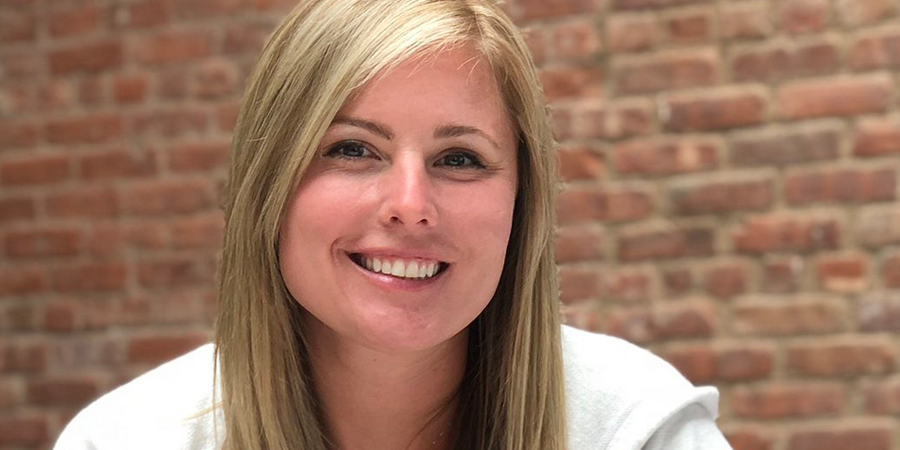












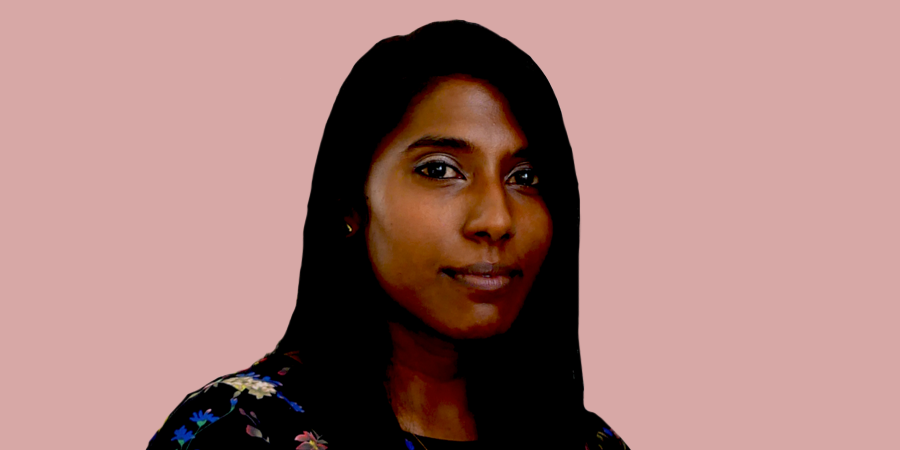




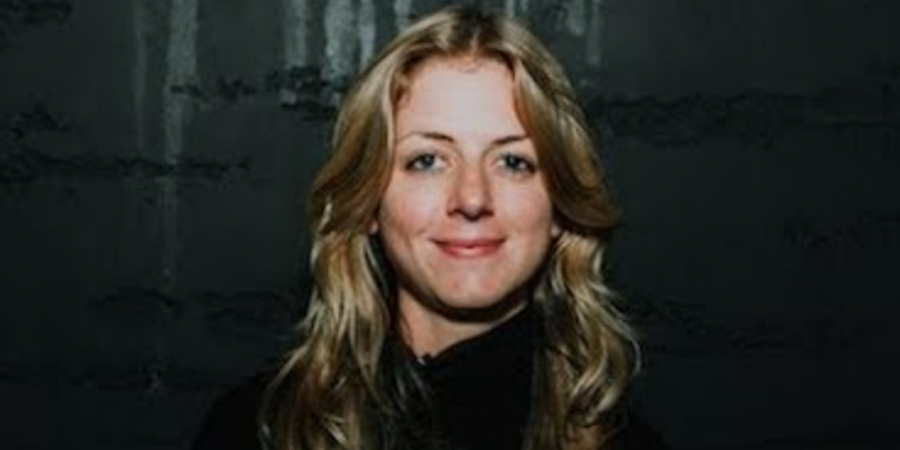















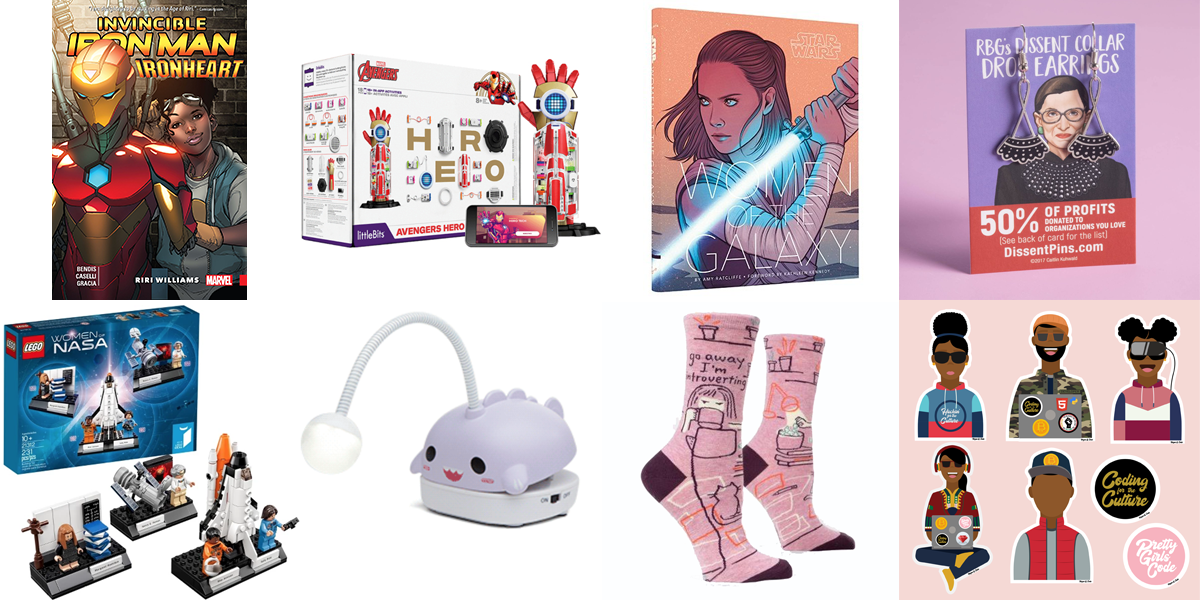




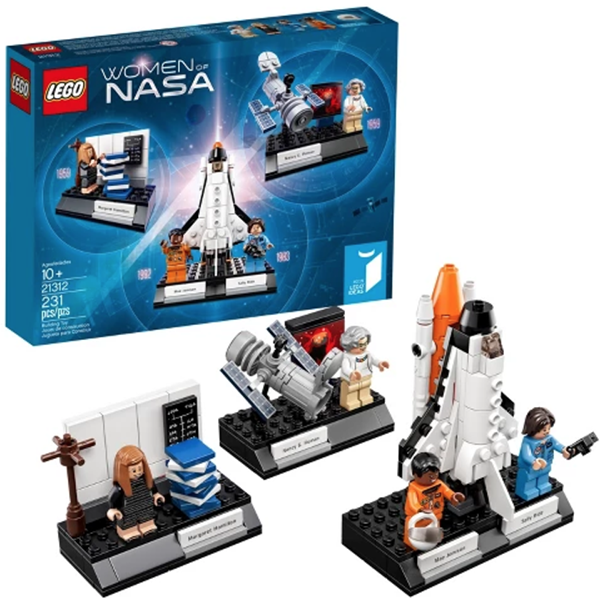


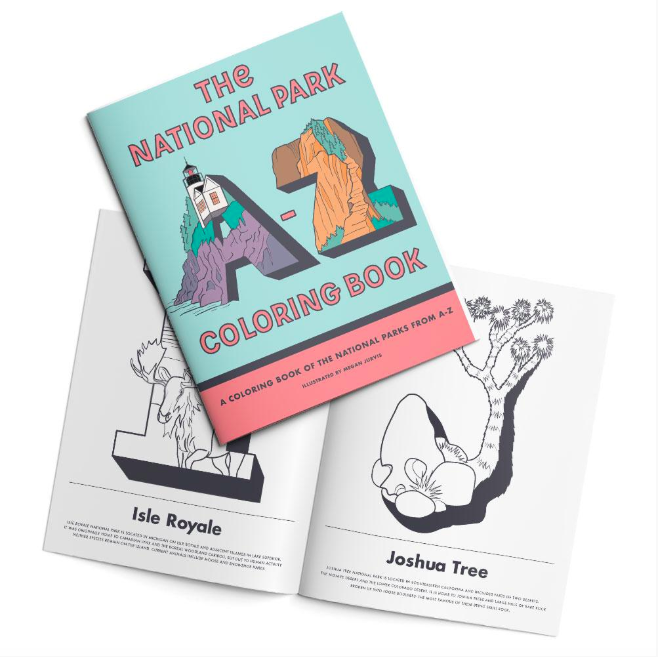


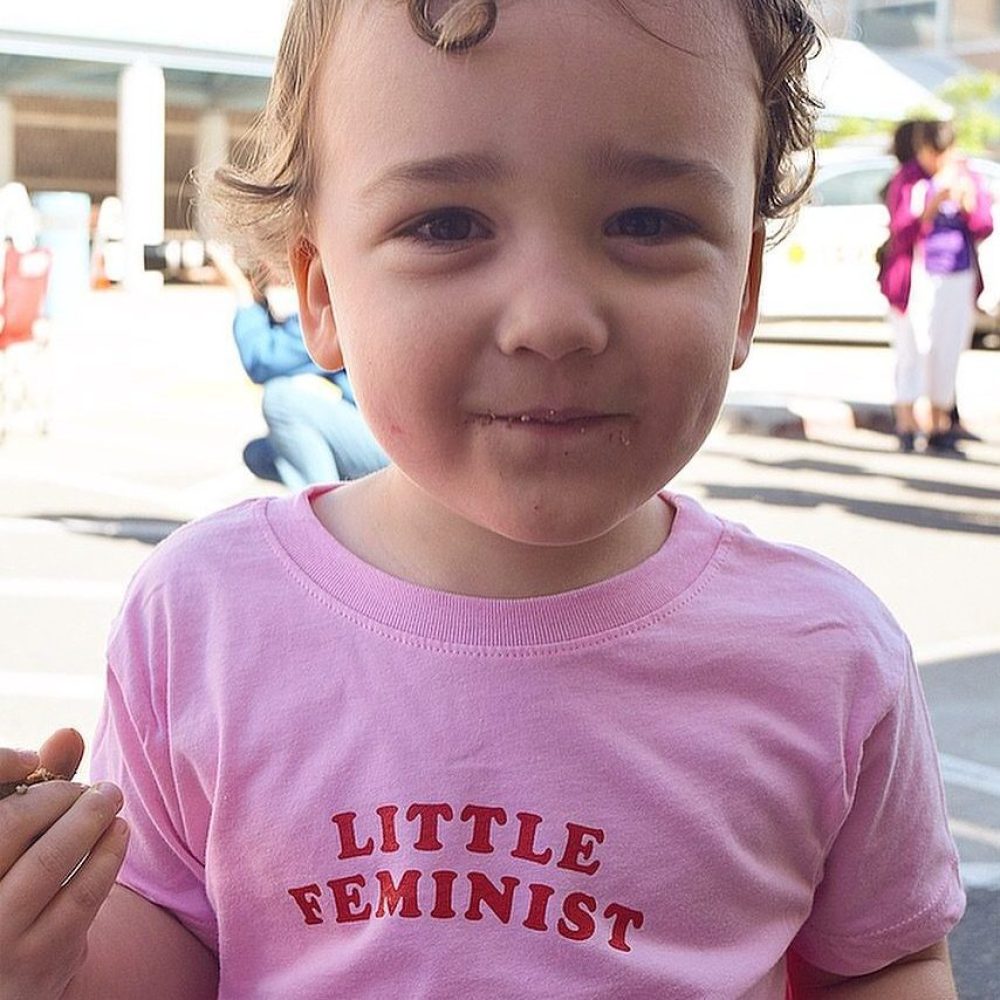



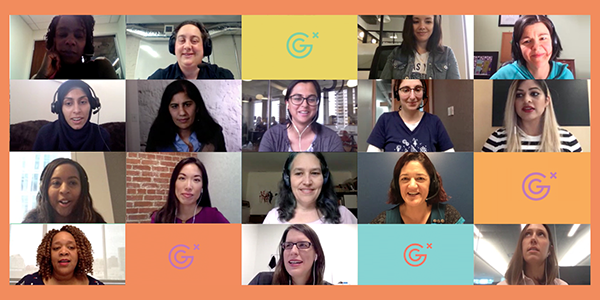







 ENGINEERING: This well-paying profession is in huge demand, leading to a rise in
ENGINEERING: This well-paying profession is in huge demand, leading to a rise in 